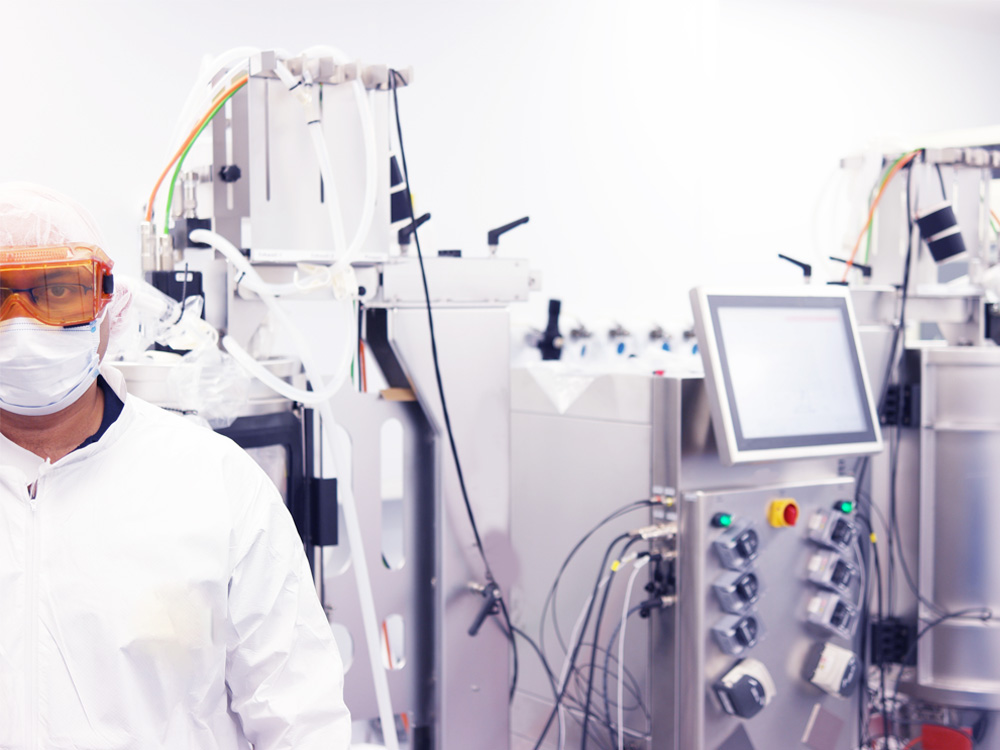What is Cell Culture Media?
Cell culture media is a nutrient-rich solution used to grow cells in vitro. It provides essential nutrients required for cell proliferation, metabolism, and protein synthesis. The composition of cell culture media varies depending on the cell type cultured and the specific requirements of the production process.
Types of Cell Culture Media
There are several types of cell culture media, each designed to meet the needs of different cell lines. Common types include:
- Basal Media: The simplest type of media, containing essential nutrients such as amino acids, vitamins, minerals. They serve as the foundation for more complex formulations and are used in culturing of various cell lines.
- Serum-Free Media (SFM): These media do not contain animal sera, such as the fetal bovine serum, reducing variability and allowing for more precise control over the culture conditions.
- Chemically Defined Media (CDM): Are free of undefined animal-derived ingredients such as serum, growth factors, hormones, and carrier proteins. CDM requires all the components to be characterized and quantitated.
- Specialized Media: These are tailored for specific cell types or applications, such as stem cells, and can be formulated with unique components like cytokines, hormones, or extracellular matrix proteins to support the growth, differentiation, and specialized cellular functions.
Why Cell Culture Media Quality Matters
Choosing the high-quality cell culture media is crucial for several reasons:
Consistency and Reproducibility
Variability in media composition between vendors and lot-to-lot can lead to inconsistent results, complicating data interpretation. Ensuring standardized formulation helps achieve comparable outcomes across different experiments and manufacturing batches.
Optimal Cell Growth
Properly formulated media create an optimal environment for cell growth and productivity. In contrast, non-optimized media can result in subpar growth rates, reduced viability, or even complete culture failures. Maintaining the right balance of nutrients is essential for sustaining healthy and productive cell cultures.
Reduced Contamination Risk
Contaminated media can compromise experimental integrity. High-quality media undergo rigorous testing for endotoxins, mycoplasma, and other contaminants to ensure reliability in cell culture experiments.
Factors to Consider When Choosing Cell Culture Media
When selecting cell culture media, several factors should be considered:
Cell Type and Requirements
Different cell types have unique nutritional and supplement requirements. Selecting media specifically formulated for your cell type is essential. Understanding these needs will help determine which media to include in your evaluation panel.
Media Composition
The composition of the media, including the concentration of amino acids, vitamins, and other nutrients, plays a crucial role in cell growth and proliferation. Analytical tools like an amino acid analyzer help verify media composition and optimize formulations of media and feeds for specific cell types and processes.
Quality Control
High-quality media undergo stringent quality control tests, including sterility and endotoxin testing, to ensure consistency and prevent deviations that may affect experimental outcomes. Contamination can alter cell behavior, interfere with experimental results, and potentially pose safety risks in biopharmaceutical production.
Cell Culture Media Analysis
Analyzing cell culture media is essential for ensuring its quality and suitability for experiments and production. Common parameters and analytical methods include:
- pH: Maintaining optimal pH is crucial for culture conditions. Most commercially available media use phenol red that serves as a visual indicator of the pH level. pH is also monitored continuously with a pH meter in the bioreactors.
- Osmolality: Proper osmolality is necessary for cell health and is measured using an osmometer.
- Contamination Testing: Methods like colony counting, microscopy, and PCR can be employed to detect bacterial, viral, fungal, pyrogenic or mycoplasma contaminations.
- Nutrient Composition and Amino Acids Analysis: Verifying presence and concentrations of essential nutrients like glucose, vitamins, minerals, and amino acids is essential for ensuring that medium meets specific cellular requirements.

What is Amino Acid Analysis?
Amino acid analysis measures the concentrations of amino acids in fresh and spent cell culture media and is used in media screening, media development, and in continuous process verification. Regular monitoring helps enhance process understanding, prevent depletion of critical nutrients, and optimize media and feed compositions for best results.
Tips for Maintaining Quality Cell Culture Media
Maintaining the quality of your cell culture media is just as important as choosing the right media. Best practices include:
- Proper Storage: Store media according to manufacturer guidelines, typically at 2–8°C, and protect it from light to prevent degradation.
- Avoid Repeated Freeze-Thaw Cycles: Repeated freezing and thawing degrades nutrients and increases contamination risk. Aliquoting media into smaller portions prevents unnecessary freeze-thaw cycles.
- Maintain Sterility: Always handle media using aseptic techniques, including working in a laminar flow hood and using sterile pipettes and gloves, to minimize contamination risks.
Conclusion
Choosing high-quality cell culture media is essential for experimental success, process robustness, and maintaining quality and safety of the final product. From ensuring consistency and reproducibility to minimizing contamination risks, well-formulated media provide the optimal environment for cell culture processes.
By considering factors such as cell type, media composition, and quality control, and by regularly analyzing media components, biopharmaceutical developers can achieve reliable and reproducible results. Investing in high-quality media and analytical tools, such as the REBEL at-line media analyzer, enhances biomanufacturing success.